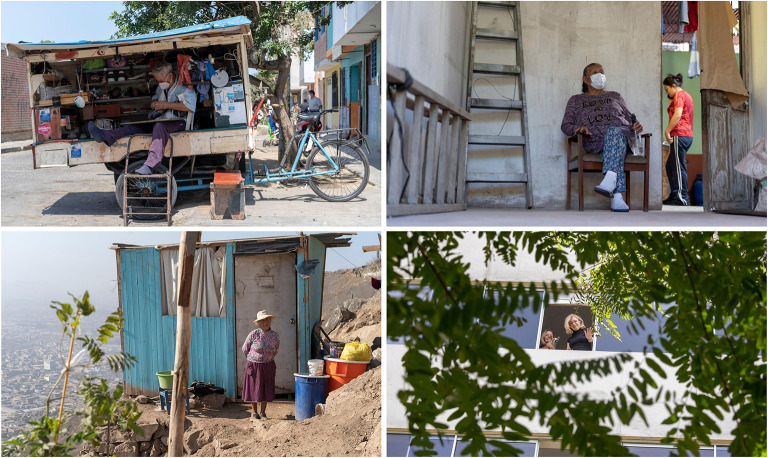Figure 5.
Testimonies from Peru highlighting different dimensions of the coronavirus outbreak and their impact on older people, and patients with cognitive decline and their families. The pictures above illustrate the people's vulnerabilities and the unpreparedness of the health system. Top left inset: Enrique (64 years old, Trujillo) suffers from diabetes mellitus but has been unable to get medication for 2 months. He is a shoe repairer with a small mobile stall and, after months of quarantine, he has to go out to work. Top right inset: Juana (64 years old, Trujillo) is a merchant diagnosed with coronavirus 3 months ago, which led to her needing supplemental oxygen and intravenous medications. Given the collapse of the hospitals, she was treated at home by her daughter. She thought she might lose her life, unable to perform simple activities (such as walking and eating) without great effort. Bottom left inset: Enedina (65 years old, Lima) lives with her youngest son who lost his job due to the pandemic restrictions. They live in a precarious room, without electricity, water or drainage. Bottom right Inset: On the other side of Lima, 83-year-old Mrs. Rosita lives with her family in a wealthy district. Her daughter has noted typical dementia symptoms, which have exacerbated since the quarantine. She doesn't understand the isolation, needs constant monitoring and urgently requires a neurological evaluation, but there are no services available due to the pandemic. Photos and testimonies from Peru documented by Alexander Kornhuber and Maritza Pintado Caipa. Individuals and relatives portrayed in the photos have provided written consent for reproduction. Reproduced with authorization from (126).

